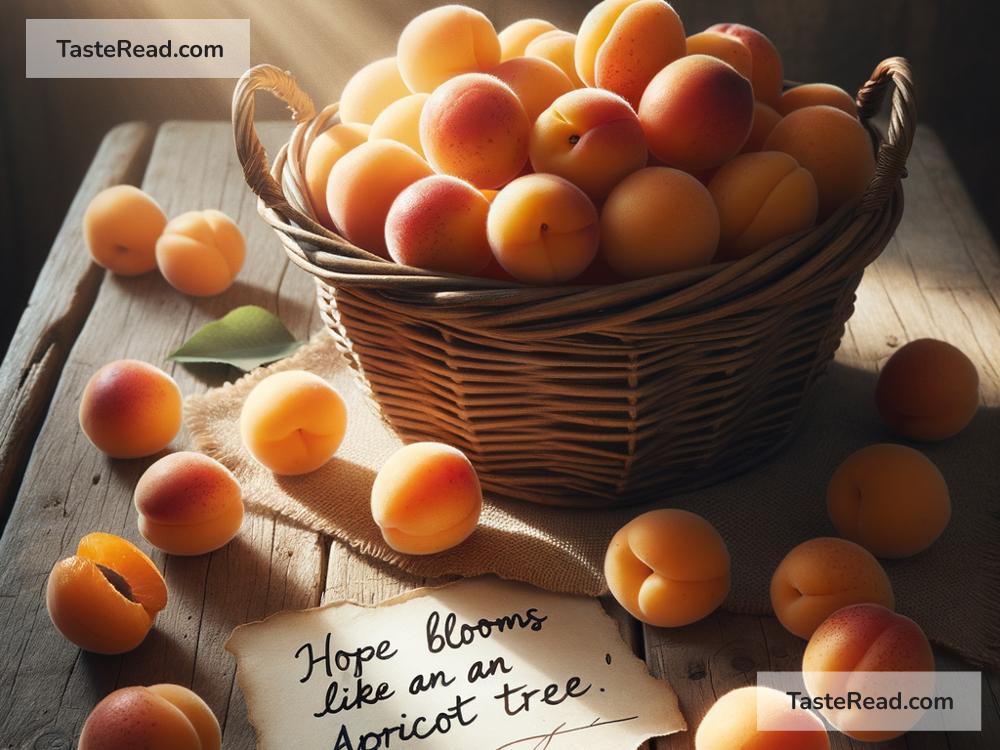How Apricots Became Symbols of Hope
Have you ever looked at a ripe apricot and thought about its meaning? For some, apricots are more than fruit—they are symbols of hope. Their bright orange color, sweet taste, and ability to grow in tough conditions make them a reminder of resilience and positivity. But how did this humble fruit gain such significance? Let’s explore its journey as a cherished emblem.
A Fruit of Survival
Apricots have a long history that traces back thousands of years. They are believed to have originated in Central Asia, and over time, they spread to many parts of the world, including the Mediterranean, Middle East, and Asia. In these regions, apricots were often grown in areas where the soil was dry or the climate harsh. This ability to thrive in challenging environments made apricots a powerful symbol of survival and adaptability.
People began to associate apricots with the idea of overcoming hardship. If this delicate fruit could grow where other crops failed, it gave farmers and communities hope. Apricot trees were like silent reminders that even in unfavorable circumstances, life could prosper.
Cultural Connections to Hope
In many cultures, apricots have been linked to hope, renewal, and optimism. For example, in Armenia, apricots are deeply tied to the identity of the country. Armenians call them “tsiran,” and they’re considered a national symbol. Apricot trees often bloom early in spring, bringing vibrant color to bare landscapes after a long, cold winter. For people living in regions with harsh winters, the apricot’s early blossoms are seen as a sign that brighter days are ahead.
Similarly, in Chinese culture, apricots have been associated with knowledge and healing. Ancient Chinese healers often used apricot seeds in traditional medicine, believing they had the power to cure ailments. As a result, apricots became symbols of well-being and the hope for a healthier future.
Apricots in Art and Literature
The emotional and cultural significance of apricots has also found its way into art and literature. Poets, writers, and painters often use apricots as symbols of hope or renewal. A famous Chinese proverb says, “Apricot blossoms will bloom when conditions are right.” This phrase represents the idea that patience and perseverance can lead to success and new beginnings.
In modern times, apricots have appeared in stories and artwork to inspire optimism. For instance, gardeners and artists sometimes use the apricot’s bright color as a motif to represent warmth and positivity. The fruit’s resilience under challenging conditions is a recurring theme in creative works, reminding us of the power of hope.
A Global Symbol of Positivity
Around the world, apricots are more than just food; they symbolize the possibilities of life and growth. Consider their nutritional value as an analogy for hope. Apricots are packed with vitamins, antioxidants, and fiber, helping people stay healthy and strong. The fruit itself provides physical nourishment, which can be seen as a metaphor for emotional and spiritual nourishment.
In countries like Turkey, apricots are often shared in celebrations and gatherings, where they bring people together. Sharing a small, sweet fruit might seem simple, but it’s a reminder of the joy found in connecting with others. For communities facing difficulties, apricots have been a small but meaningful way to express hope and unity.
Modern Expressions of Hope Through Apricots
Today, apricots continue to inspire hope in unexpected ways. For example, in regions recovering from natural disasters or war, apricot trees are often planted as a sign of rebuilding. These trees, once they bloom and bear fruit, symbolize recovery and the strength to move forward.
Nonprofits and organizations sometimes use apricots in their logos or campaigns to promote messages of resilience. The apricot’s image serves as a reminder that growth is always possible, no matter how dire the situation may seem. Even social media spreads the hopeful symbolism of apricots, with posts featuring gardens, recipes, or apricot blossoms that encourage people to stay optimistic.
What Apricots Teach Us About Hope
So, why have apricots come to represent hope? It’s simple: they remind us that beauty and growth can emerge even when the odds are stacked against us. They teach us that resilience is not about ignoring challenges but facing them and blooming despite the difficulties.
An apricot’s journey—from a tiny seed to a flourishing tree full of ripe fruit—is a powerful lesson for us all. Life may sometimes seem dry, barren, or challenging, but like the apricot, we can find ways to adapt and thrive. The sweetness of its fruit also reminds us that hope, like patience, rewards us with something meaningful.
Next time you bite into an apricot, take a moment to think about its story. Let its bright color and refreshing taste remind you that hope is always lingering—even in the toughest times. Whether planted in gardens, written into poems, or shared among friends, apricots prove that symbols of hope can grow anywhere, if you’re willing to look for them.


